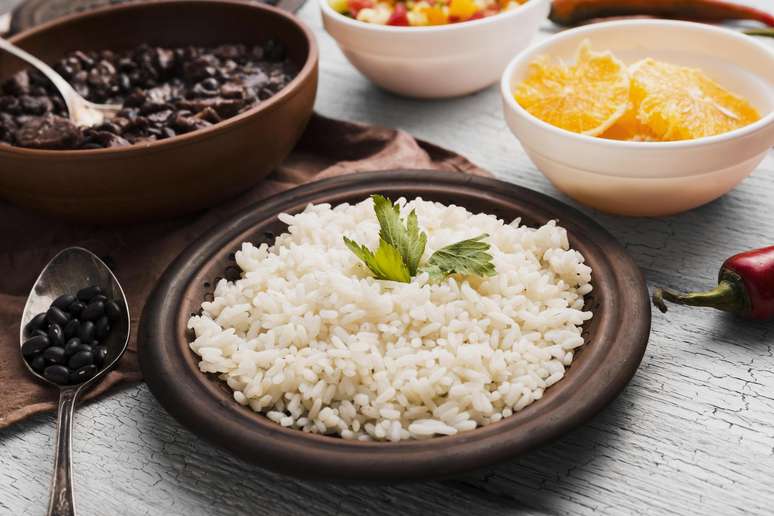Breast milk is essential for the development and health of the baby. Therefore, proper storage is essential.
The heat has just passed and should return soon. In addition to all the health problems that high temperatures pose, they also tend to pose an obstacle for breastfeeding mothers. This is because it becomes even more difficult to ensure the safety and effectiveness of breast milk storage.
This care is fundamental. After all, breast milk is essential for the development of the child, and is recommended up to two years of age, being the only source of food up to six months, as defined by the World Health Organization (WHO) and the Ministry of Health.
The need for adequate storage arises in various situations, whether it is the mother’s return to work or temporary absences for other reasons. In these cases it is essential to ensure that the milk remains in ideal conditions until consumed.
Impact of high temperatures
Intense heat can negatively affect the quality of breast milk without proper storage, increasing the risk of contamination and loss of essential nutrients. Therefore, mothers should pay special attention to storage practices during these warmer months.
Therefore, it is essential to follow specific guidelines for collecting, storing and thawing breast milk, thus ensuring that babies continue to receive all the nutritional and immunological benefits of this essential food, even in high temperature conditions.
Tips for storing breast milk during hot weather
Dr. Carolina Curci, gynecologist and obstetrician, shares valuable advice for breastfeeding mothers. Watch:
1. Careful preparation before extraction
“Before starting to collect milk it is essential to adopt rigorous hygiene procedures”, explains Carolina Curci. The doctor recommends taking off all jewelry, covering your hair, wearing a mask or scarf, washing your hands and arms well up to the elbow, and cleaning your breasts only with water.
“Dry your hands and breasts with a paper towel or clean cloth to avoid leaving residue. This is a critical step to prevent milk contamination,” she added.
2. Correct technique when extracting
“Performing pumping in a quiet, relaxing environment, while keeping the focus on the baby, is essential,” she explains. Carolina also emphasizes the importance of performing delicate circular movements on the areola and breast, which can be performed manually or using a pump.
“It is important to discard the first jets of milk to guarantee the quality of what will be preserved. And conservation must take place immediately in a previously sterilized bottle”, explains the doctor. She reinforces the need for meticulous care to preserve the nutritional and beneficial properties of breast milk.
3. Adequate storage jars
Storage bottles must be easy to clean and disinfect, have a good seal and be made of inert and harmless material. Additionally, proper sterilization of bottles and lids is essential, as is avoiding contact with the interior after cleaning.
For mothers who need to travel during the summer, Carolina recommends using special bags to store breast milk. “This is because these bags help keep the milk at the ideal temperature during transportation,” she recommends. She also suggests using ice packs for longer trips.
4. Storage and shelf life of milk
Breast milk stored in the refrigerator is good for 12 hours, while in the freezer it can be stored for up to 15 days. If intended for donation, the period is limited to 10 days. When mixing milks from different collections in the same bottle, the expiration date is counted from the date of the first extraction.
“Keeping breast milk at the correct temperature is essential,” emphasizes Carolina. The obstetrician recommends storing milk in the freezer below -18°C and in the refrigerator at no more than 4°C, as this preserves nutrients and prevents the growth of bacteria.
5. Thawing and offering to the baby
To defrost, heat the milk in a bain-marie with the heat off, stirring slowly to combine the components. Milk should not be boiled or heated in the microwave. When offering it to the baby, serve the milk in a cup, cup or spoon, so that the baby can lick it and swallow it without risk of choking.
When thawing breast milk, Carolina Curci emphasizes the importance of doing so safely. “Thaw milk in the refrigerator or in warm water, avoiding the use of the microwave or very hot water,” she advises, explaining that this helps maintain the beneficial properties of the milk.
Importance and secrets of breastfeeding
In addition to providing essential nutrition to the baby, breastfeeding provides health benefits to the mother, such as reducing the risk of cancer and supporting postpartum weight loss. Patience is essential as your baby adapts to new ways of offering breast milk. Experts recommend offering it when the child is not excessively hungry or tired, thus making it easier to accept.
Source: Terra
Ben Stock is a lifestyle journalist and author at Gossipify. He writes about topics such as health, wellness, travel, food and home decor. He provides practical advice and inspiration to improve well-being, keeps readers up to date with latest lifestyle news and trends, known for his engaging writing style, in-depth analysis and unique perspectives.









